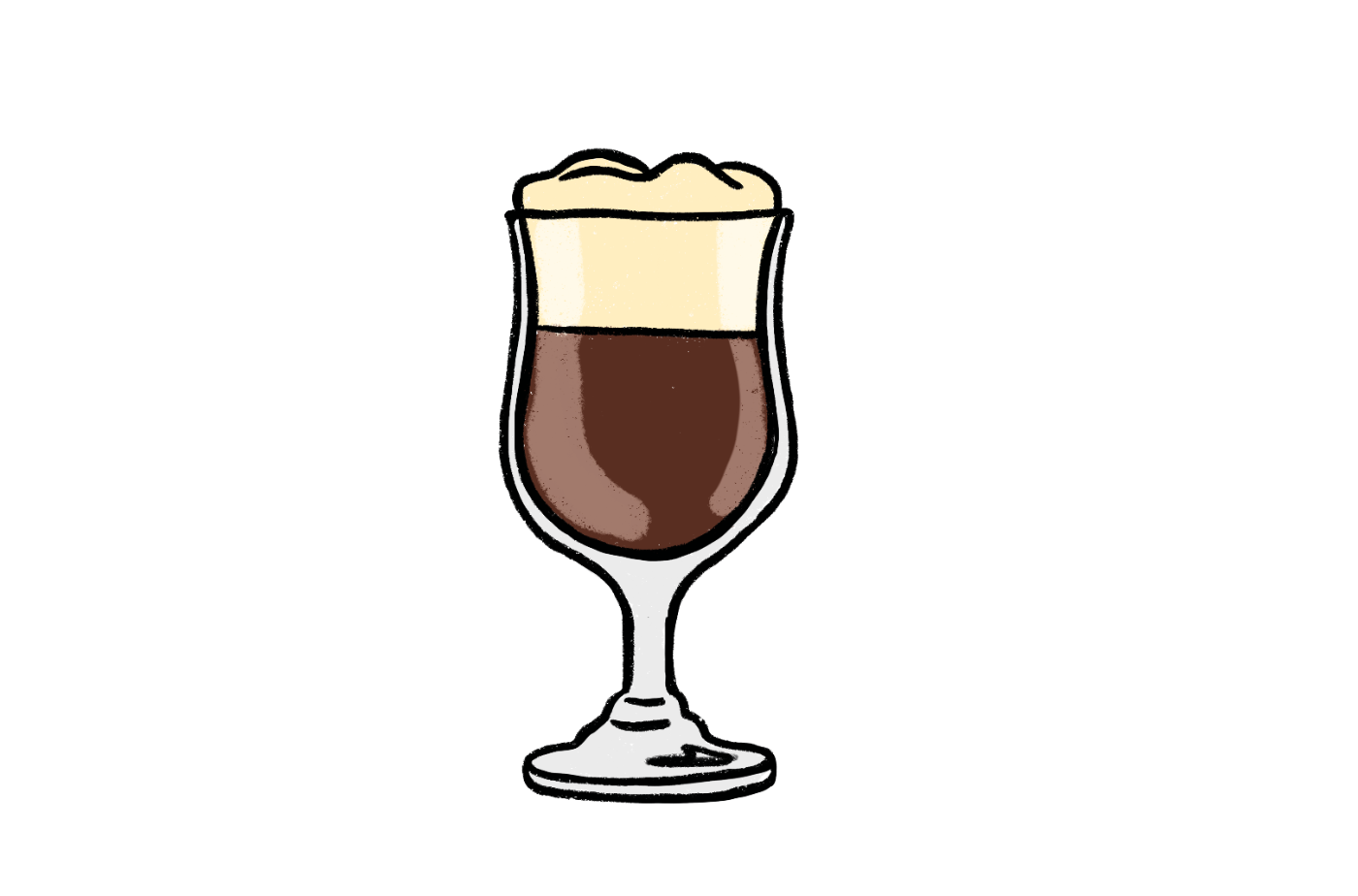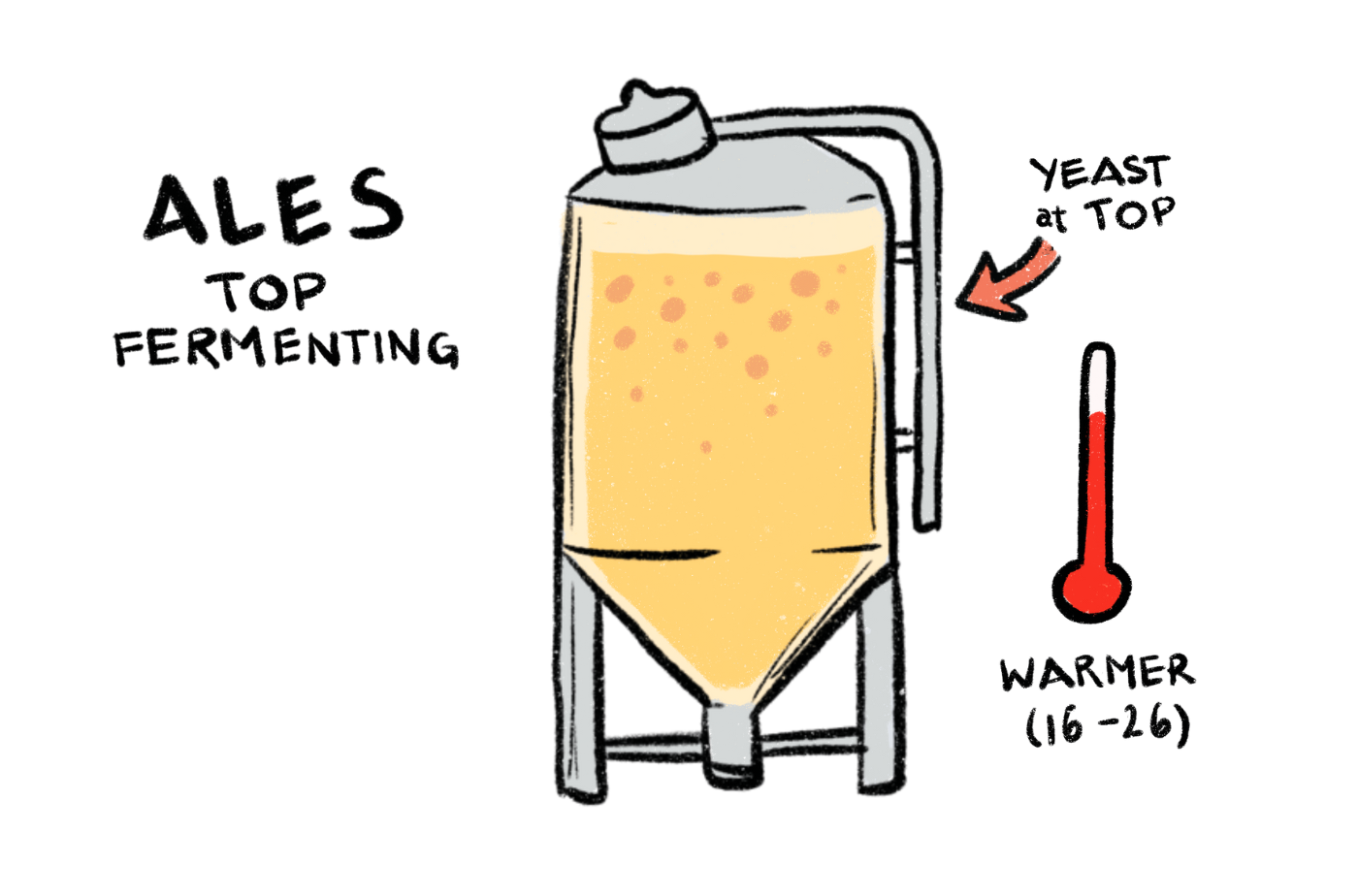

A true chocolate lover's favourite.
So, what is it?--red
A dark ale based on the English Porter beer style, Stouts can trace their history back to the 1720s. However, the name ‘Stout’ didn’t appear until later, when one of the original Porter breweries debuted a darker, more potent version and called it a ‘Stout’. Over time, Porters and Stouts came to exist alongside each other, with the big delineation happening in the brewery, with Porters made with malted barley, while with stouts it’s unmalted roasted barley. You can see what that means for the beers, too, with Stouts like Porter’s evil older brother, with its mega dark flavours a contrast to the more caramel richness of Porters. While Stouts have an English heritage, the style was probably made most famous by Guinness, who have been making Stouts (and Porters) since the late 1770s.

What does Stout taste like?--aromatic
Stouts are nearly always the blackest beer in the fridge. The roasted barley grains give Stout an epic level of dark, powerful, heady character, with flavours that lend towards blackened toast, coffee, and even toffee, with chocolate and cooked caramel in the mix. Stouts can be either dry (like Guinness) or sweet, especially when brewers add things like milk to make them taste richer and creamier. While Stout can be a silken, rich and moreish easy-drinking black beer style, some of the most powerful (and alcoholic) beers on the planet are Stouts.

Main styles it's known for?--cellar
Irish Stout - As the name suggests, this is a Stout style made famous by the Irish, who knew they could make better Stouts than the English centuries ago! Guinness is the Irish stout hero, but the country boasts many similar beers, and now the style has been emulated worldwide. Irish Stouts are typically lower in alcohol, dry rather than sweet, and smooth, although with a slightly bitter, hoppy finish. Oh, and Irish Stout is made with nitrogen instead of carbon dioxide, and the smaller bubbles give an extra creamy edge!

Milk Stout - Also known as ‘sweet Stout’, Milk Stout sees the addition of lactose (aka the natural sugar in milk), which instantly makes these styles sweeter, creamier and yes, milky. Think chocolate milkshake, and you’re on the right track. Usually lower in alcohol and often flavoured with other ingredients (known as ‘adjuncts’ in the beer world) like cocoa or an array of fruits. Intriguingly enough, Milk Stouts were first marketed as a healthy alternative because of the ‘milk’ nutritional value!

Imperial Stout - Imperial stouts are the biggest and baddest of the lot, typically weighing in above 8% alcohol. They have ultra-hedonistic, decadent dark chocolatey (and normally sweet) flavours, with layers of alcoholic warmth just upping the flavour ante even more, often with more of everything (malt, hops and lactose). This style also lends itself to barrel ageing, which has created a whole other subset of cellar-worthy, seriously complex dark beers that cross over rather neatly into the world of red wines in intensity.

How is Stout made?--cork
Firstly, Stout is also an ale, which means it is made with a yeast that ferments at the top of the tank. The ingredients aren’t that different from beers like Pale Ale or IPA, with barley, yeast, water, and hops used in the blend. Hops are less important to most Stout styles, but they work to give just the right amount of bitterness. As mentioned earlier, Stout is made with unmalted, roasted barley, and the roasted grains are the key to the flavour here, giving all the chocolatey coffee goodness. You must be careful about how much of this barley goes in, as too much makes for something that tastes like an ashtray! The other ingredients added to Stout as adjuncts open up a whole world of complexity, too. Lactose is one we’ve touched on, but also oats (which give more oaty roundness), chocolate, raspberries, and so much more make for seriously delicious dark beers even more indulgent (if a little closer to a dessert beer). Finally, the use of nitrogen instead of carbon dioxide to give Stout bubbles dates back to the 1950s, when Guinness first started doing it to provide a super smooth texture. The ploy worked and nitrogenated (rather than carbonated) Stout became a phenomenon. Nowadays, ‘nitro’ beer is a whole sub-genre, with a whole raft of velvety beers as the result.

What foods should you be pairing it with Stout??--plum
Perhaps the only beer that will pair well with chocolate, the richer styles of Stout (like Milk Stout or any sweeter beer) are an ideal match with a dessert of chocolate and fruit. Think Black Forest cake or chocolate fig pudding. The dry styles of Stout (hello, Guinness) will pair nicely with smoked meats, game meats like rabbit or venison, plus charred vegetables like sweet potato or carrot. One of the more unusual classic Stout matches for the less-sweet styles is oysters, with the saline (but surprisingly sweet) oyster tang a fascinating contrast to the more bittersweet flavours of a great Irish Stout. It shouldn’t work, but it does!
Recipes to pair with Stout--pizza
- Chocolate and Amaretto Pudding
- Smoked Pancetta Burgers
- Portuguese Pork Skewers with Charred Tomatoes
- Luxury Pomegranate Oysters

Fun Fact about Stout--earth
Imperial Stout is also known as ‘Russian Imperial Stout’ because this style of powerful dark beer was famously popular in the Baltic states (and the extra hops and alcohol no doubt helped it survive the trip from the UK to St Petersburg). Russian Catherine the Great was apparently a massive fan!
About the Author:
Andrew Graham is a master winemaker and viticulturist (aka a grape guy) who fell into the wine industry as a teenager and never looked back! Voted the 23rd most trusted wine critic on the planet, Andrew judges at wine shows across the globe and runs foolishly long ultramarathons in his spare time (swiftly followed by a recuperative glass of wine or a frosty beer).
Do you know your wine personality? If your answer is no, take our quiz to find out which wines to pick up next and build your box!
Build my box





